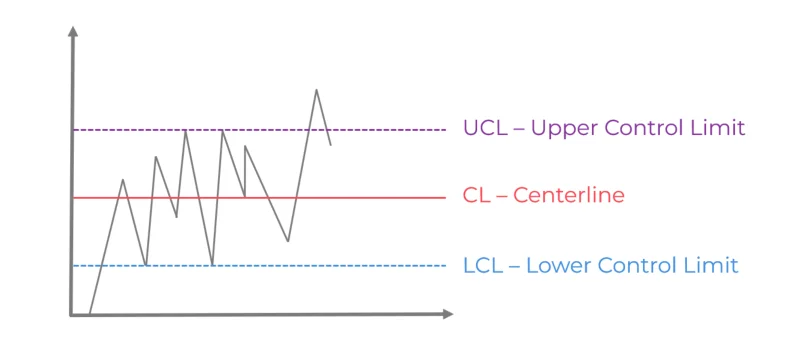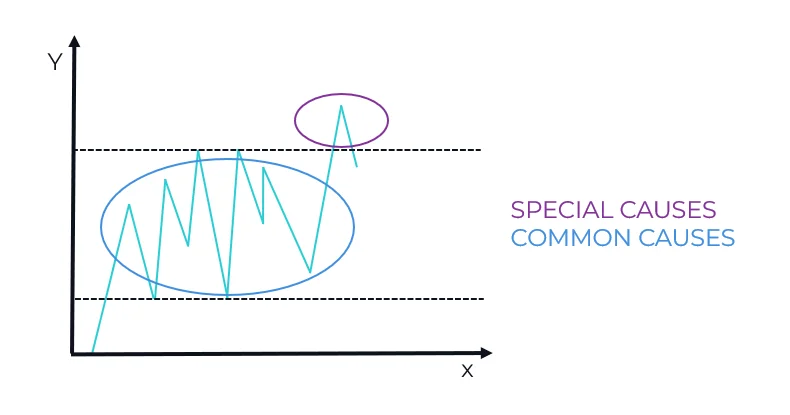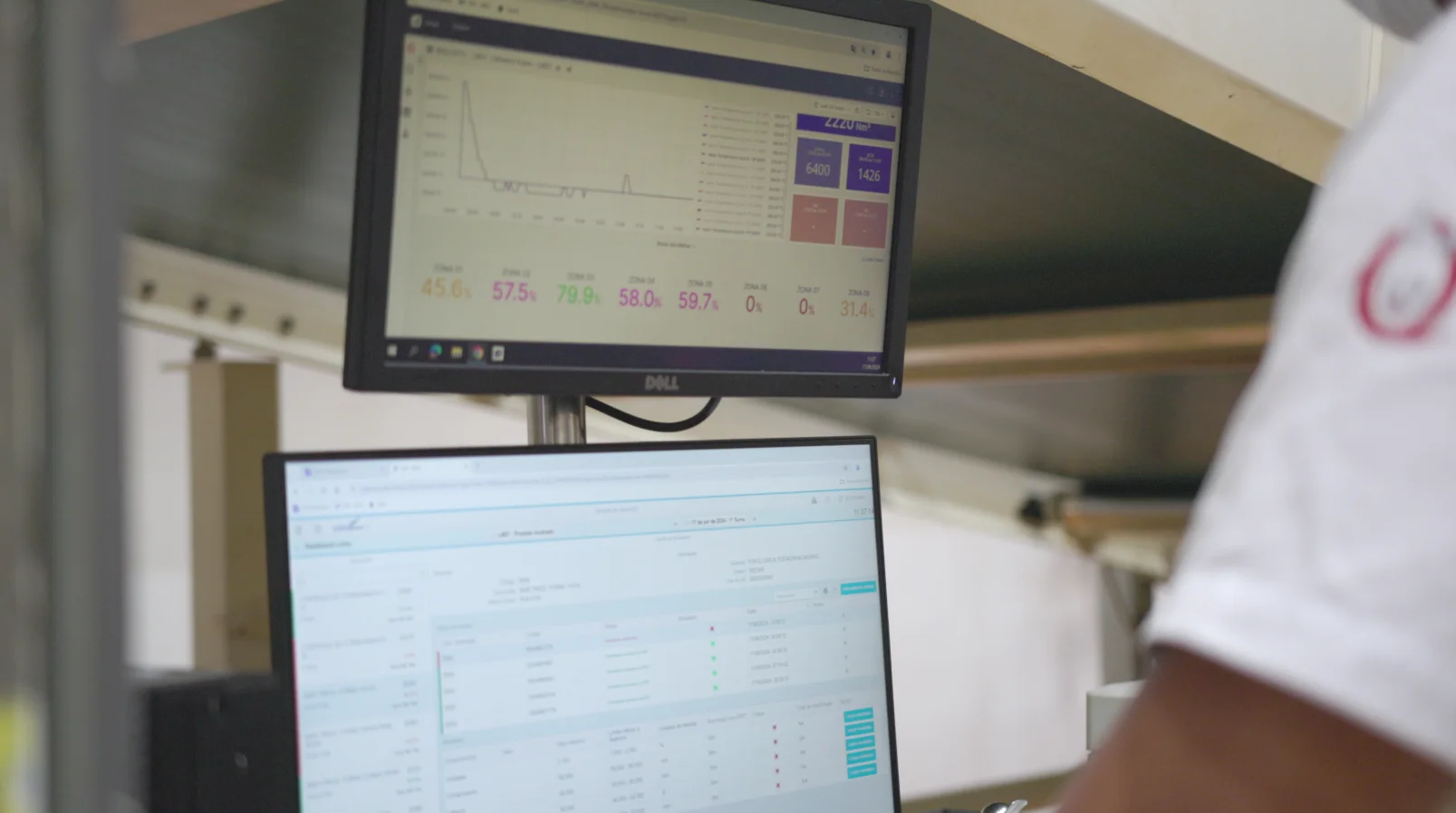Statistical Process Control (SPC) is one of the main tools used to ensure quality in production. Its focus is to reduce the variability of the processes, since, according to Montgomery (2004), “quality is inversely proportional to variability”. The SPC emerged in the 1920s with Walter A. Shewhart, who used statistical methods to define when to intervene in the production process. He applied these principles in Bell Telephone’s labs, monitoring factors such as wire strength and connection performance.
Later, Shewhart’s work was expanded by W. Edwards Deming, who brought SPC to postwar Japanese industry. By showing how to control variability, it has helped companies improve the efficiency and quality of products, transforming the country’s industry.
Today, SPC is applied in various sectors of manufacturing industries. It works by collecting and analyzing production data, identifying deviations that indicate failures or instabilities.
The SPC uses several quality tools, which vary according to the analysis objectives. Among the most common tools is the histogram, which shows the frequency of occurrence of values in a data set, making it easier to identify their shape, dispersion, and central tendency. Another important tool is the scatter diagram, which relates two variables on a graph (x, y), helping to identify correlations and possible causes of variations.
The Pareto chart is also widely used to prioritize problems by organizing data by frequency of occurrence. Although it does not indicate the severity of each failure, it helps to identify the most recurring problems.
Finally, the control chart (or control chart), the main tool of the SPC, stands out. It allows you to track the behavior of a process over time, signaling non-standard variations and allowing corrective actions before failures take hold.
Control and Variability Charts: How to Detect and Correct Anomalies
This tool is essential to ensure the stability and quality of industrial processes over time. The application of the SPC begins with the collection of relevant data — such as temperature, weight or dimension — using appropriate tools. Technologies such as the Internet of Things (IoT) are especially useful in this context, as they allow for accurate and real-time data collection. After collection, a representative sample is defined and the historical behavior of the process is analyzed, determining the central line (LC), as well as the upper (LSC) and lower (LIC) limits of control. These limits, based on the mean and standard deviation, are fundamental for the creation of control charts, the main tool of the SPC.

These graphs allow you to identify variations in the process, which can be classified as common causes (natural and within limits) or special causes (outside the expected patterns). While common causes reflect normal variations, such as small differences between operators, special causes can indicate more serious failures, such as defects in raw materials or technical failures, requiring immediate corrective action.

The last step of the SPC involves continuous monitoring, the identification of trends, and the periodic review of results, which allows for strategic adjustments and continuous improvement of the process. Finally, it is worth remembering that the SPC considers each variable independently, focusing on the individual behavior of each one over time.
Strategic Application of SPC in Industry: Monitoring, Standardization, and Quality
The application of Statistical Process Control (SPC) allows monitoring the performance of processes, evaluating their statistical stability and determining whether the necessary improvements should be punctual or structural. By identifying variations and causes of inconsistency, the SPC collaborates directly to reduce waste, minimize rework, and adapt to quality standards, ensuring more predictable and consistent results.
In addition, SPC easily integrates with continuous improvement methods such as the PDCA cycle. In the planning stage, it helps to identify the critical points to be monitored. During execution, the use of sensors and IoT technologies makes real-time monitoring possible. In the verification phase, control charts allow you to compare the collected data with the established standards. Finally, corrective actions are implemented based on the analyses, closing the cycle with operational and quality gains.
This model is applicable to several industries. In the automotive sector, it is used in the control of welding and precision of components. In pharmaceuticals, it ensures optimal dosage and production conditions. In the food and beverage industry, SPC guarantees quality in stages such as pasteurization and packaging. In the chemical sector, it avoids unexpected reactions, and, in the production of pulp and paper, it maintains the weight within the standard.
In all these contexts, the SPC proves to be a versatile and strategic tool, combining technology, control, and data intelligence to achieve productivity, quality, and competitiveness.

SPC as a tool for Compliance and Cost Reduction in Industry
According to the National Confederation of Industry (2022), companies that use the SPC tool reduce the defect rate by up to 50% and achieve more than 95% compliance with quality standards, which avoids penalties and strengthens brand reputation. This compliance is often audited by regulatory bodies such as the FDA (USA) and ANVISA (Brazil).
Standards such as ISO 9001 require organizations to adopt data-driven practices to monitor the effectiveness of their processes. The SPC directly meets these requirements by allowing continuous control of variability and monitoring of key indicators. The standard also highlights the importance of leadership in sustaining a culture of quality.
In the food industry, the SPC is also essential to meet ISO 22000, which deals with food safety throughout the production chain. In addition, the HACCP (Hazard Analysis and Critical Control Points) system uses the SPC to monitor critical risk points, ensuring the integrity of the products.
The combination of SPC and data science further enhances its benefits. The integration between traditional statistics and advanced analytics allows for faster and more accurate decisions, optimizing processes, reducing costs, and strengthening continuous improvement.
In short, SPC goes beyond quality control: it is a pillar for regulatory compliance, operational efficiency, and industrial innovation. Learn more about ST-One.